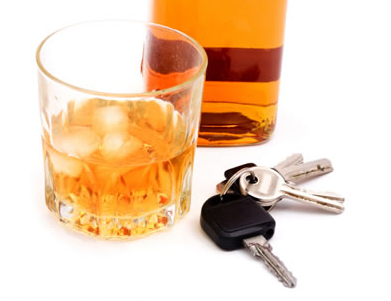Here’s yet another real-life illustration of the challenges that society faces in dealing with DWI offenders.
This one involves a male, age 37, who, according to our local newspaper, “Led authorities on a roughly 18-mile car chase that ended when he crashed into railroad tracks…”
Wait a minute: how do you crash into railroad tracks? They’re flat, right? I could see maybe crashing into the side of a slow-moving train, because that actually happened to an employee of ours, no injuries fortunately… but that’s another story.
This was the man’s third DWI arrest since 2002, and involved drug use. The article doesn’t specify which drugs. At the moment, the trend is for offenders to come up positive for opioids and methamphetamine, but it could have been anything from hash to Ecstasy to Xanax. They can all impair driving.
Anyway, our protagonist drove over spike strips twice, but kept going. By now the tires are shredded and he’s doing real damage to the wheels. No doubt he has great difficulty just keeping the vehicle on the road, but does this cause him to stop? No.
“He continued… onto I-25” — a major north-south Interstate between the Mexican border and someplace called Buffalo, Wyoming– “where he drove off the left side of the road and onto the railroad tracks.” And that’s where he stopped. He wouldn’t leave the car, insisting he would kill himself with a knife. They talked him down, and eventually he was taken into custody. Many charges were filed. The following day he was released on $2500 secured bond. Hearing in two weeks time.
His was not exactly an uncommon pattern for DWI offenders. His first arrest had been 17 years earlier, at age 20. I imagine he’d begun drinking several years prior — many young men do. Two more arrests followed, scattered across that 17 year period. He could well have been driving impaired on a weekly basis the whole time — just not getting caught.
You may have heard this stat: a typical offender has driven under the influence some 50 to 200 times for each arrest. In the 80’s that figure was 500 to 1000 times. The improvement is due to advocacy by MADD and many dedicated individuals in government, who fought to change the laws and procedures around enforcement.
I know the public gets upset when they read that DWI arrests are again climbing, but that’s often a good sign. It can mean more police are in the streets, watching for drunk drivers, setting up check points, and making arrests before something bad happens.
One reader had a typical response: outrage that the man was released on bond, saying they might as well have gifted him with a bottle of Fireball to help celebrate the New Year.
Fireball is Canadian whiskey, 66 proof, cinnamon-flavored, and a best-seller here in the USA.
The reader’s point: Innocent people could have been killed by this man’s recklessness. He’s absolutely right. In fact, it happens frequently.
Of course, this offender may yet receive added jail time as punishment. But would another, say, 6-12 months term of incarceration decrease the odds that he will reoffend? You’d think so, but research seems to suggest it may not.
If that’s the case, then what will? I mean, he’s been doing this for almost 20 years.
More thoughts on the subject in our Deterring Drunk Driving series. Or watch this space for future posts.














Recently in our small community a young man led police on a late night chase after they attempted to stop him. He eventually got stuck in a field, and ended up running into a swampy River where he called unsuccessfully for help, as it was dark and he couldn’t be located. He drowned. I imagine if the cops had been successful in stopping him on the road he would be alive today. I have no idea if he had been drinking, but most people stop for cops unless they’re drunk or dangerous. The obit didn’t say what his BAL was at autopsy. So there are worse things than DUI’s.